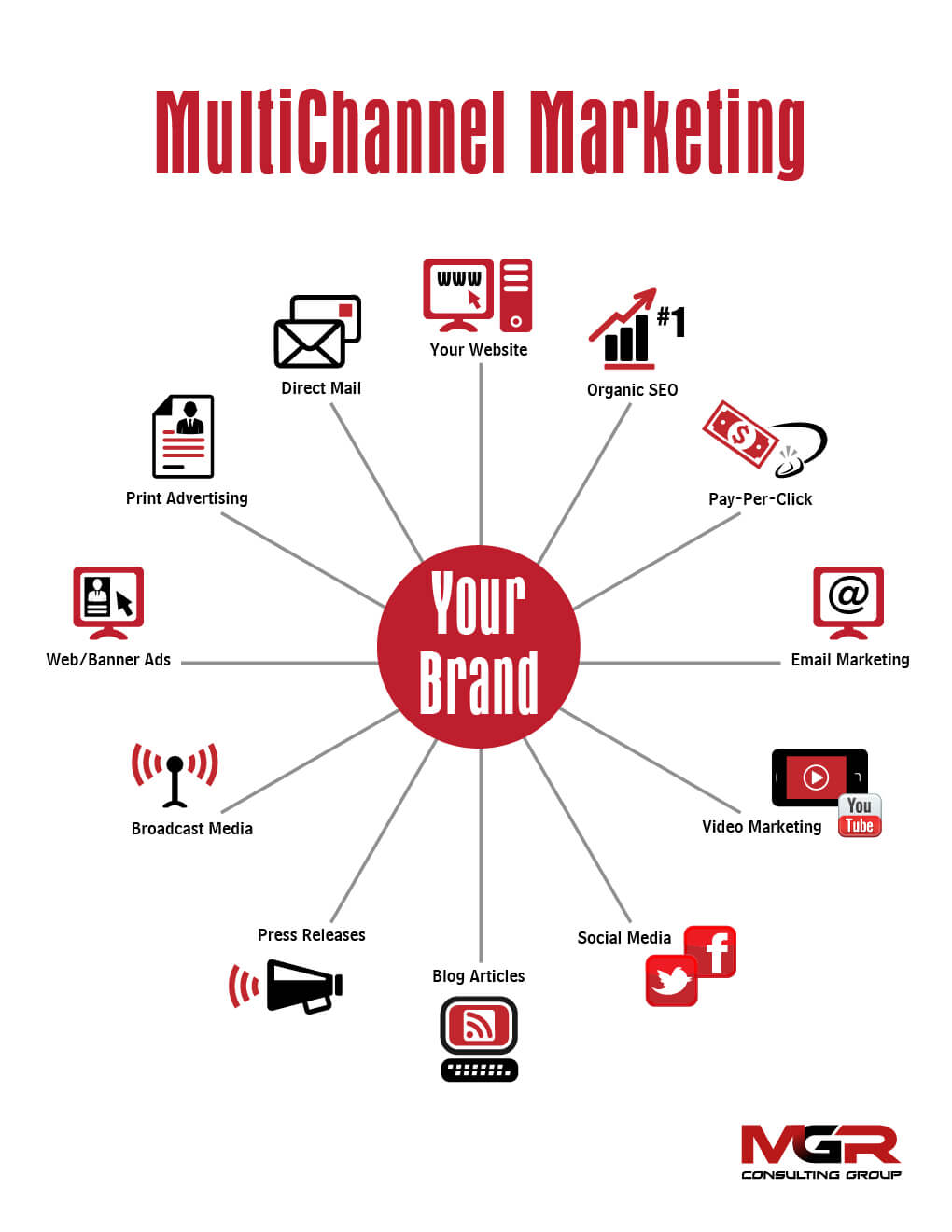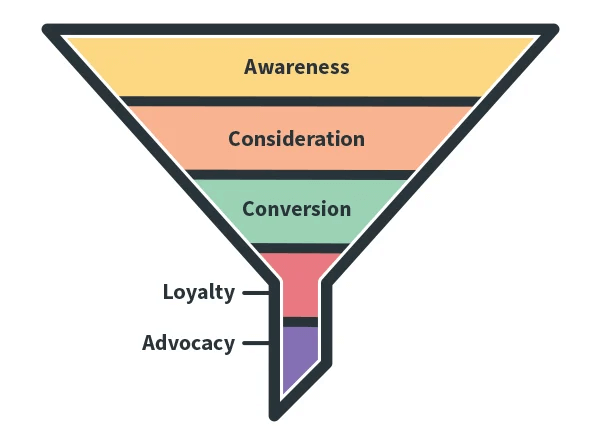How to Establish a Multi-channel Presence for your Business
As a business owner, you have a plethora of routes you can take to establish a strong brand presence online and generate sales.
For instance, you have search engine optimisation (SEO), content marketing, social media marketing, and plenty of others.
At the same time, there are also endless places where consumers go to learn about businesses. And this can sometimes make it impossible to know where, when, and how to reach them.
Fortunately, there is a solution — just to be present everywhere your customers are.
While this can seem like an arduous task but it’s certainly doable by implementing a multi-channel marketing strategy. If you need help with marketing contact our SEO agency.
Recently, multi-channel marketing has gained immense popularity among marketers and business owners and it’s for a good reason.
Multi-channel marketing lets you pace with how your customers operate: in lots of places all at once.
Let’s learn more about what multi-channel marketing is, why your business needs it, and how to establish a multi-channel presence for your business with a step-by-step process.
What is Multi-channel Marketing?
Multi-channel marketing is the practice of being present and interacting with your customers on multiple channels, both direct & indirect, with the goal of promoting your business, products, and services.
It is about taking your business to your customers on the channels they prefer instead of working to bring your customers to your preferred channels (i.e. your website).
A channel can be anything, either a strategy such as content marketing or a platform like Instagram.
For example, instead of working to bring your target customers from Instagram to your eCommerce website, you set up an Instagram shop and let your customers place their orders right there on the platform.
Why your Business Needs a Multi-channel Presence
It’s true that multi-channel marketing gives your customers a choice to engage with your business on the channels they prefer. But they’re not the only ones who benefit from multi-channel marketing.
There are several benefits a business can manifest from multi-channel marketing.
For starters, multi-channel marketing can help you boost your brand awareness, unlock access to a larger target audience, and take advantage of industry gaps to outrank your competitors.
Let’s discuss this in more detail.
- Brand awareness: When you take your business on multiple channels, you‘re introducing your brand to more audience who could end up being potential customers. But if you don’t have a presence on multiple channels, some people may never know that your brand exists in the first place.
- Larger audience: Because multi-channel marketing requires you to be active on all channels your target audience use, you’ll automatically have a larger audience of potential customers you can convert. So, by having an active presence on the channels your potential customers frequent, you will have far more opportunities in terms of capturing relevant traffic & attracting new customers.
- Industry gaps: Multi-channel marketing can help to discover gaps in relevant channels that your competitors might not be using yet. This can be a great opportunity to establish your business presence on those channels and attract new customers by being active on them.
Elements of Effective Multi-channel Marketing Strategy
As the number of marketing channels continues to rise, embracing multi-channel marketing is no longer just an option but essential to attain your desired success.
However, success can not be simply achieved by being just present on every channel you can find.
For your multi-channel marketing strategy to make a difference, you need to address the important elements of multi-channel marketing as described below.
- Reach: The goal of multi-channel marketing is to expand your reach and increase your brand awareness. But first, you must be able to identify channels that will accomplish this goal.
- Message: The effectiveness of your multi-channel marketing strategy depends largely on how well your messaging resonates with your target customers.
- Consistency: Multi-channel marketing is not just about identifying the best channels and broadcasting the right messaging but also being consistent in that messaging across all channels.
- Engagement: When it comes to multi-channel marketing, not all channels are ideal for content distribution. Some channels such as social media platforms, for example, require a certain level of engagement ( i.e. your potential customers engaging with your content and/or you engaging with your potential customers) for attaining success and sustaining it for the long term.
- Experience: If your potential customers are interacting with your brand on multiple channels, you need to ensure that their experience is seamless across all channels.
How to Establish Multi-channel Presence Successfully
Establishing a multi-channel presence doesn’t have to be overwhelming.
If you’re ready to implement a multi-channel marketing strategy for your business, we’ve already prepared a seven-step plan for you to get started.
1. Determine the Goal of your Multi-channel Marketing Strategy
Your first step to creating an effective multi-channel marketing strategy is defining what it is that you want to accomplish as an end goal.
You see, any marketing strategy without a measurable goal isn’t a strategy at all, it’s simply an aimless marketing effort.
Put another way, your multi-channel marketing strategy will simply end up being ineffective and directionless without a clear, measurable goal.
So before you do anything, you need to figure out what is the goal of your multi-channel marketing strategy.
Ideally, the goal of any multi-channel marketing strategy should help to achieve the following:
- Create a strong brand personality that stands out from the competition
- Promote your USP (unique selling proposition) around your business offerings
- Hit your target KPIs (key performance indicators)
More importantly, your marketing efforts must stay consistent with your end goal throughout all channels. This means that your messaging needs to serve the same purpose, which is spreading awareness about your USP and converting prospects into customers.
Additionally, the tone and personality of your messaging must be carried over to all channels you leverage.
2. Define your Buyer Persona
Apart from the end goal of your multi-channel marketing strategy, another equally important aspect that you always need to keep in mind is your potential customers.
And to identify your potential customers, you need to define your buyer persona.
A buyer persona is simply the fictional representation of your ideal customer. It includes information about background, characteristics, demographics, pain points, and much more that ultimately helps in creating the complete picture of who exactly you are targeting.
There are many different ways to create a buyer persona:
- Collect user data
- Send out surveys to your site visitors
- Communicate with your current customers
- Monitor visitors’ activity on your website as well as external channels
In multi-channel marketing, however, you also need to keep track of one additional crucial piece of information — channels that your buyer persona prefers.
If you’re not sure how to obtain such data, you can always rely on Google Analytics or a different analytics solution.
By monitoring your website using Google Analytics, you can easily discover where the majority of your visitors are coming from, and what channels they generally use the most.
3. Decide your Targeted Marketing Channels
The purpose of multi-channel marketing isn’t to promote your business on every marketing channel that exists on the internet.
In fact, doing so will only lead to wasting your marketing budget, effort, and time without generating any viable results.
If you want to get the most out of your multi-channel marketing strategy, you need to find out and focus on the channels that will best reach your target customers.
To find out which marketing channels will generate the most fruitful results, you need to go back and understand the buyer persona you created earlier.
You see, different kinds of audiences prefer using different marketing channels.
For example, if your buyer persona is B2B customers who are in their mid-40s, then LinkedIn would be a better marketing channel for your business.
Besides this, you also need to optimise your messaging according to the marketing channels you pick.
For example, if you’re going to leverage TikTok or Youtube as your primary marketing channel, then you need to optimise your messaging for video marketing.
Similarly, if you’re going to use Facebook Ads to market your business, then there would be a completely different set of content best practices you’ll have to follow.
This brings us to the next step of our multi-channel marketing strategy.
4. Create Content that Aligns with Selected Channel
Once you’ve selected the primary channels to market your business, it’s time to create content tailored for each channel.
As we just discussed, your content should not only be based on your buyer persona alone, it must be tailored according to each of the channels you’re targeting as well.
Although, this does not mean that you should simply copy and paste the same content on each marketing channel you’re utilising.
Instead, you should aim to create a cohesive presence across all channels you’re targeting.
In simple terms, you can utilise the same approach or strategy for creating content. But it must specifically cater to and make sense for each channel you’re using.
Let’s say you want to share an infographic across all social media platforms to market your business. In this case, you must resize and rework the design to meet the optimal image dimensions of every social media platform.
For example, make your infographic horizontal for Facebook, Square for Instagram posts, and vertical for Stories.
Apart from this, you must also modify the accompanying caption or copy to ensure that it fits the platform you’re sharing it on.
Lastly, the tone & voice you use on one platform should not be the same for other platforms.
For instance, the tone & voice you use in your LinkedIn posts should not be the same you use in your tweets. Doing so will only make your content seem out of place on other platforms.
5. Integrate Marketing Channels
Integrating your marketing channels is crucial because it helps to ensure that the overall experience on each channel is cohesive and works in harmony together.
For example, if your marketing channels include utilising all social media platforms, then you must find a way to club your social profiles in one place.
The best way to do this is by using a social publishing platform such as Buffer, Hootsuite, Spoutsocial, etc.
Using any of these platforms, you can bring all your social media content to one place and keep track of what will be going live and when.
Doing so is extremely helpful because it lets you stay on top of your multi-channel marketing game and make sure that your overall messaging is on the same page.
6. Target the Audience at Each Stage of the Sales Funnel
Like any other marketing strategy, your multi-channel marketing strategy should take your potential customers through the marketing funnel to achieve your end goal (i.e. sales).
And the best part about multi-channel marketing is that it fits perfectly well with the marketing funnel.
If you aren’t familiar with the marketing funnel, here’s a quick visual description:
At the awareness stage, you want to define your buyer persona and understand their user intent.
Additionally, you also want to direct your marketing efforts into spreading awareness about your business & its offerings across all channels.
Ideally, your primary goal at the awareness stage should be to introduce your business to your potential customers.
At the consideration stage, your marketing efforts should not only be focused on spreading awareness but also on giving your potential customers strong reasons to consider your business.
And at the conversion stage, your primary focus should be to target potential customers who have decided that they want the solution to resolve their problem.
So at this stage, your marketing efforts must be directed towards reinforcing your USP and promoting what you can bring to the table and how it can solve their problem.
In the end, once a potential customer is converted into a sale, you must work on nurturing your customer relationship with the end goal of building brand loyalty and ultimately, brand advocacy.
7. Be Consistent with your Multi-channel Marketing Efforts
Keeping your marketing efforts consistent across all channels is critical for establishing a successful multi-channel presence for your business.
Research has also revealed that businesses that employ a consistent multi-channel marketing strategy enjoy a 14.6% increase in their annual revenue.
The point is that all your selected marketing channels must work together if you want to achieve the end goal of your multi-channel strategy.
Let’s suppose that you’ve just launched a new product and you want to promote it through multi-channel marketing.
In this scenario, you want to create content that is primarily focused on the new product for each channel. But your content must also have a similar tone and messaging across all channels.
For example, you could:
- Write an SEO-optimised blog post announcing the launch of your new product on your website
- Create an animated video highlighting all features of your product for Youtube
- Post a photo carousel showcasing your product's USP on Facebook
- Build a custom filter for Instagram to promote your new product, etc.
The key lesson here is that even though each piece of content you create is different, it is still consistent with what you’re trying to achieve — Promote your new product.
Get Started with Multi-channel Marketing
As you have just learned, multi-channel marketing is mostly about being present on multiple channels where your potential customers frequent and start connecting with them using a single, multi-channel marketing approach.
Hopefully, this seven-step plan will help you to come up with a powerful multi-channel marketing strategy for your business and establish a successful presence across all channels.
However, if you still need any help to create a winning multi-channel marketing strategy for your business, feel free to contact us at any time.
DIGITAL MARKETING FOR ALL OF AUSTRALIA
- SEO AgencyMelbourne
- SEO AgencySydney
- SEO AgencyBrisbane
- SEO AgencyAdelaide
- SEO AgencyPerth
- SEO AgencyCanberra
- SEO AgencyHobart
- SEO AgencyDarwin
- SEO AgencyGold Coast
- We work with all businesses across Australia






